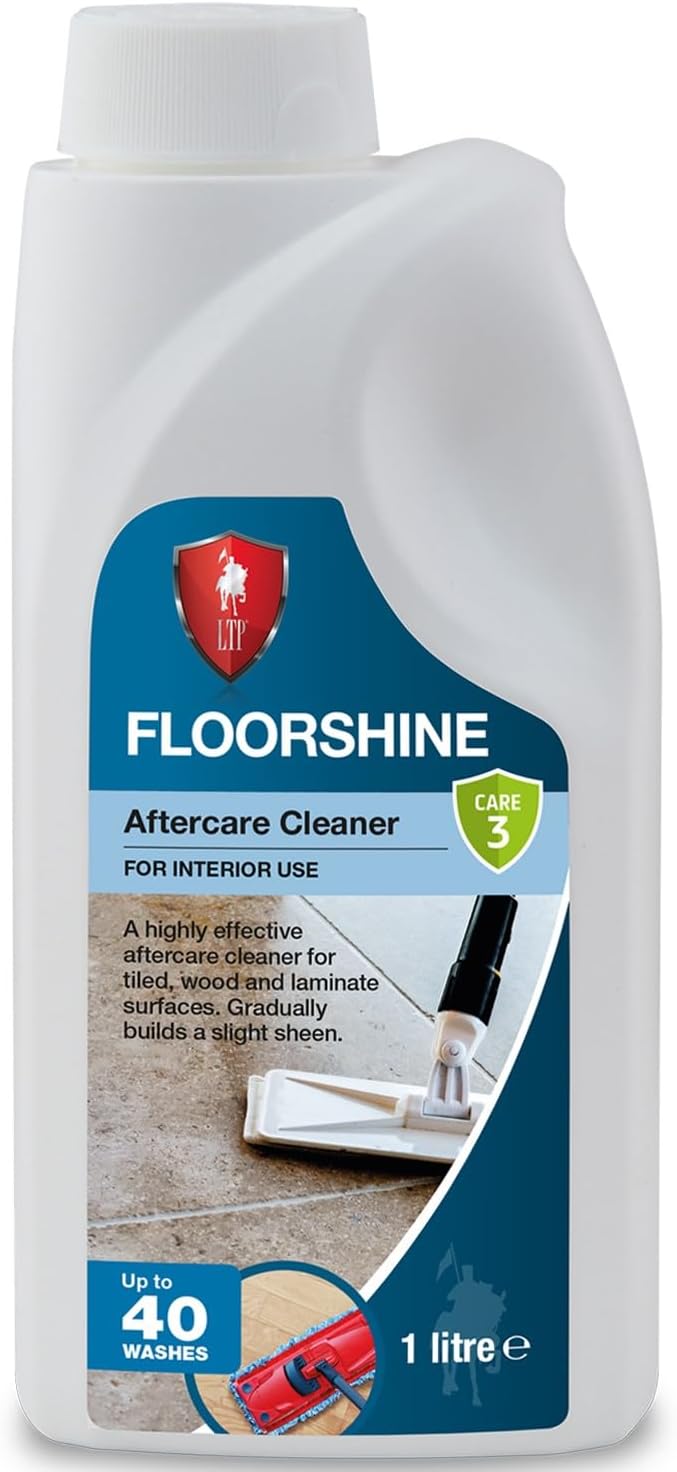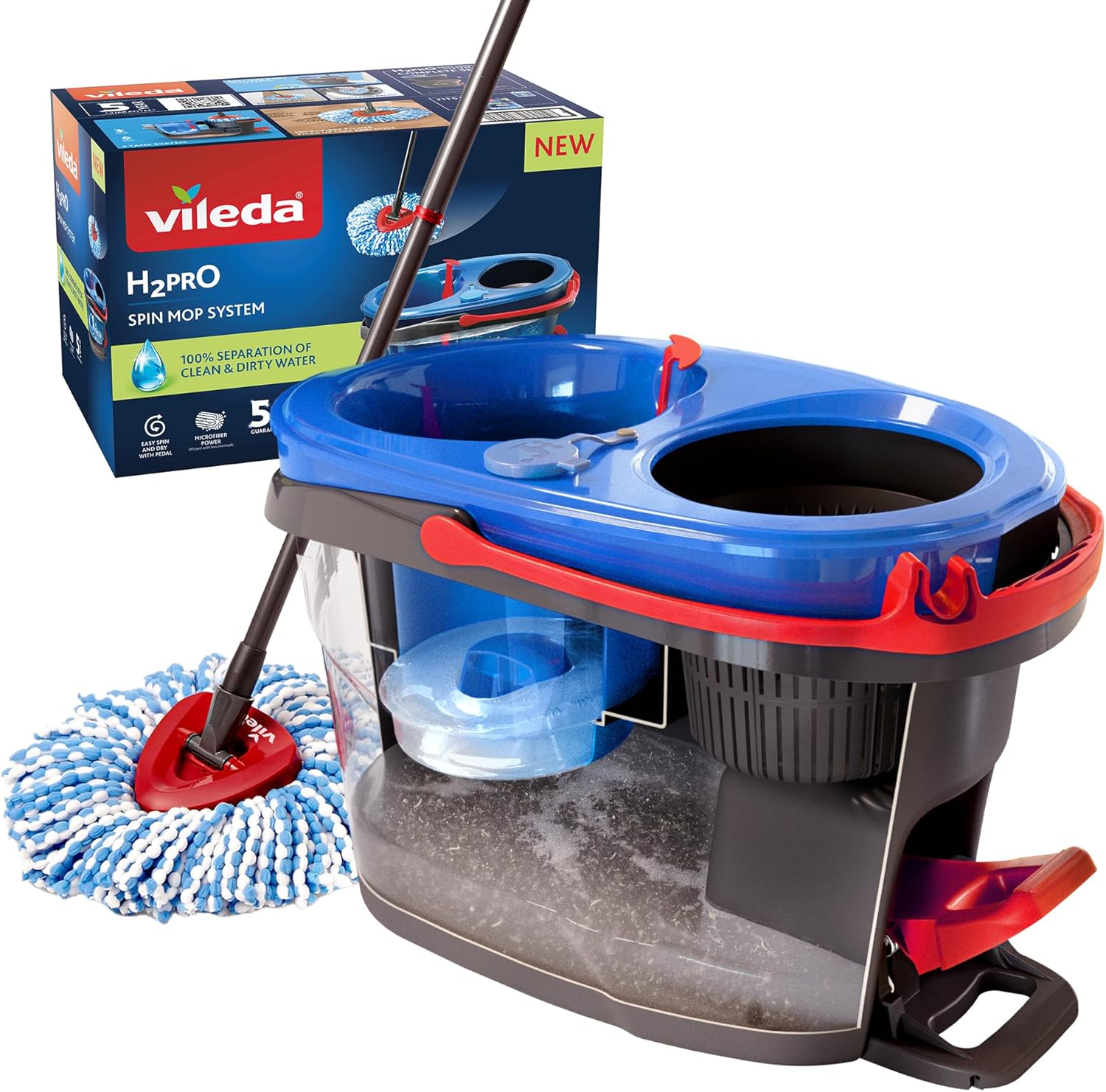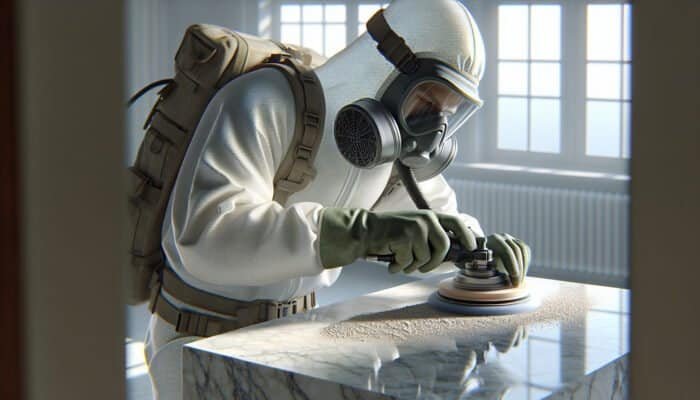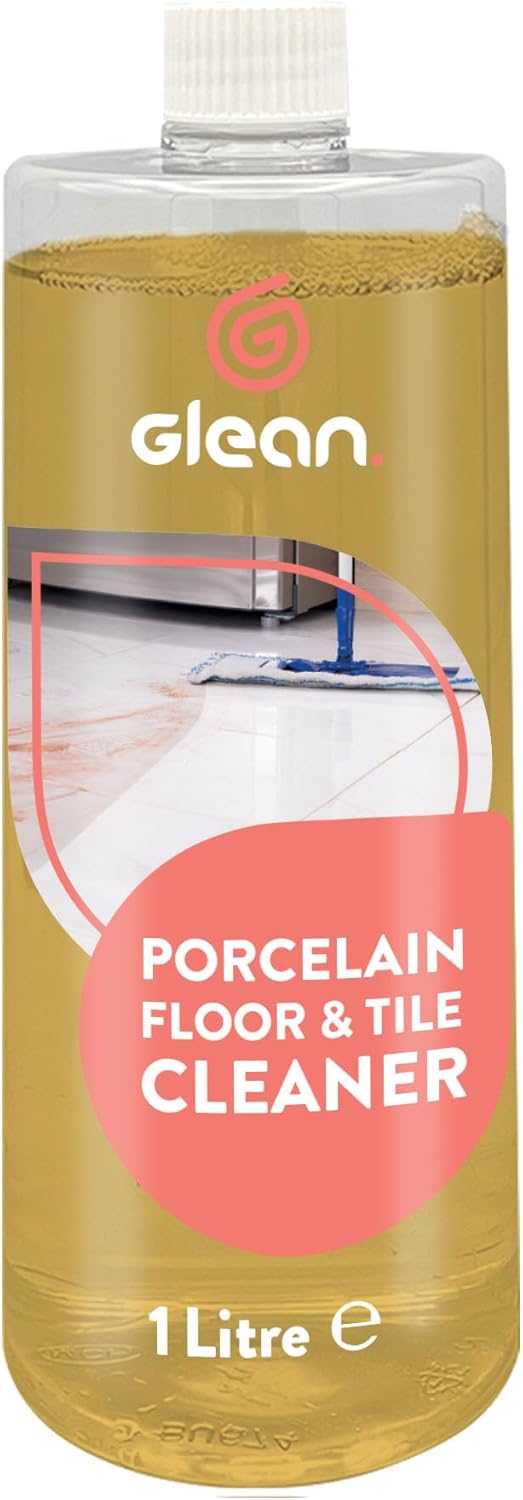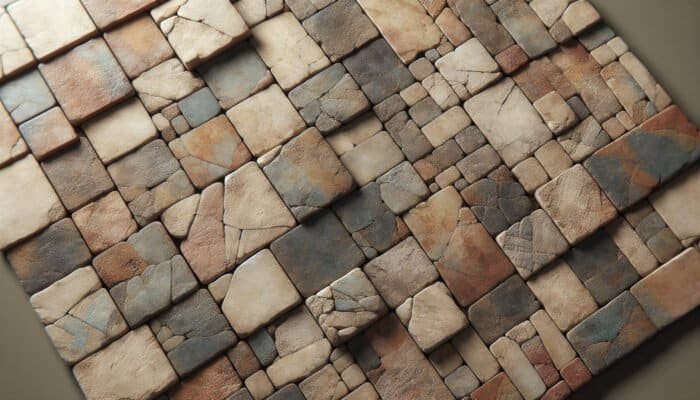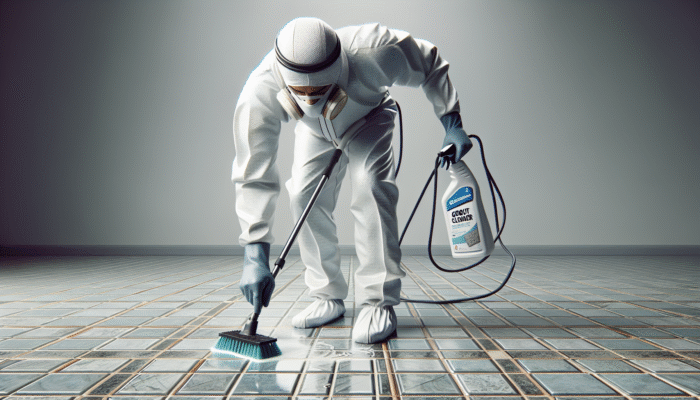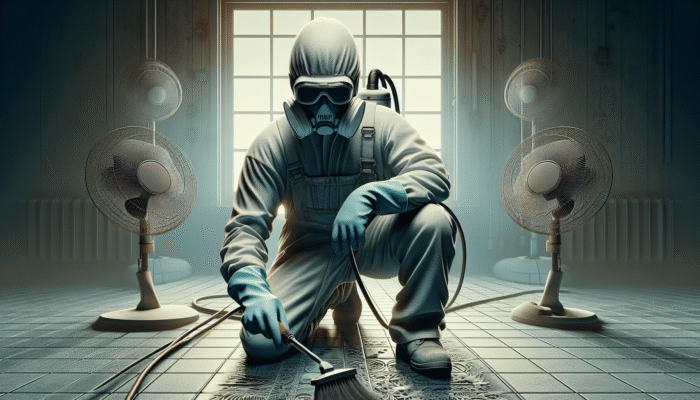This article, titled “Essential Stone Floor Cleaning Solutions in the UK for Homeowners”, provides valuable insights into effective strategies for maintaining stone flooring:
- Preserving your stone floor is essential for maintaining both its beauty and longevity, especially in homes with high foot traffic.
- This article explores the best cleaning solutions available in the UK, tailored for various natural stones, such as marble, limestone, slate, travertine, and terrazzo.
- It emphasizes the benefits of choosing pH-neutral cleaners as the safest option for calcium-based stones, effectively preventing etching and degradation.
- The significance of carefully reviewing product labels is underscored, particularly to avoid grout cleaners with harsh acidic components.
- This guide features do-it-yourself cleaning tips alongside recommendations for professional-grade products, offering insights on selecting the best products for your specific type of stone.
- Furthermore, it provides helpful advice on stain removal, polishing, and sealing techniques to extend the life of your stone floors.
- The article includes expert insights from Abbey Floor Care, offering ongoing maintenance tips and smart tool recommendations.
- It highlights the importance of eco-friendly cleaning options that successfully balance cleaning power with environmental sustainability.
Discover Top Stone Floor Cleaning Solutions for Homeowners in the UK
Utilising the right tools and products is crucial for maintaining the beauty and integrity of your stone floors. Selecting from the highest-rated cleaning products for stone floors can enhance the durability and visual appeal of your surfaces significantly. In the UK, a variety of stone floor cleaners is available, each specifically designed to tackle the unique challenges posed by different types of stone. Below, we highlight some of the most reputable and effective options preferred by both homeowners and professionals to achieve pristine stone floors.
Crucial Reminder: Always Review Cleaner Ingredients Before Use
When caring for natural stone floors like Marble, Limestone, Travertine, and Terrazzo, it is essential to recognize that these surfaces are composed of calcium carbonate, which makes them particularly sensitive to acidic substances. Cleaners containing acidic ingredients—such as vinegar, lemon juice, or many commercial grout cleaners—can react chemically with the stone, resulting in etching, dull spots, and irreversible surface damage.
Even products labeled for tiles might not be safe for stone, especially grout brighteners, which often contain acids designed to eliminate discoloration. Always examine product labels meticulously and avoid any cleaner that contains acid-based compounds, including sulfamic acid, phosphoric acid, or hydrochloric acid.
To ensure safety, opt for pH-neutral cleaners specifically formulated for natural stone. Before applying any new product extensively, conduct a patch test in an inconspicuous area. If there is any uncertainty, consult a stone care professional to guarantee the best, long-lasting results.
Explore the Benefits of Lithofin KF Tile Restorer for Your Natural Stone Floors
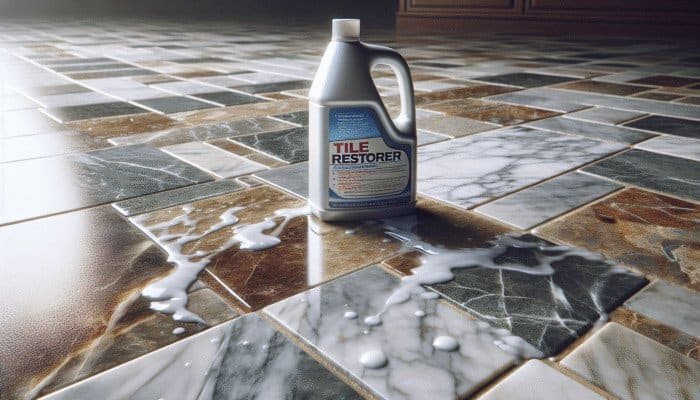
Lithofin KF Tile Restorer is highly esteemed as one of the most effective cleaning products available in the UK, specifically designed for natural stone floors. This expertly formulated cleaner excels at removing grease, stubborn stains, and embedded dirt without compromising the surface integrity of the stone. Its unique formulation penetrates deeply into the stone, allowing it to effectively target ingrained grime that many standard cleaners struggle to eliminate.
What sets Lithofin KF Tile Restorer apart is its impressive versatility. It is suitable for various stone types, including limestone, marble, and slate. This feature makes it an ideal choice for homeowners with diverse stone flooring, ensuring a consistent and thorough clean across different materials. Users frequently report that after using Lithofin, their stone floors appear revitalised, showcasing a restored natural sheen that enhances the overall aesthetic of their living spaces.
For anyone considering a shift to professional-grade cleaning products, Lithofin KF Tile Restorer is an excellent starting point. Not only does it offer outstanding cleaning capabilities, but it is also remarkably easy to apply, requiring minimal effort for maximum results. Whether for routine upkeep or tackling more challenging stains, this cleaner is essential for anyone committed to keeping their stone floors in immaculate condition.
HG Hagesan Stone Cleaner: The Versatile Solution for Every Stone Type
HG Hagesan Stone Cleaner is another premier choice in the UK market for stone floor cleaning. This multifunctional cleaner is designed to accommodate a wide range of stone types, delivering a reliable solution regardless of the flooring material. Users particularly value HG Hagesan’s ability to provide a streak-free finish, a vital aspect of preserving the elegance and charm of stone flooring.
A significant advantage of HG Hagesan is its straightforward application process. It can be effectively utilised on both interior and exterior stone surfaces, making it ideal for patios, hallways, and kitchen floors. This adaptability allows homeowners to streamline their cleaning toolkit—utilising one cleaner for multiple surfaces and simplifying their maintenance routine.
If you are concerned about harsh chemicals, HG Hagesan offers a gentle yet effective cleaning solution. It is formulated to be safe for regular use, ensuring your stone floors remain free from damaging residues. Its ability to leave a shiny, clean surface without excessive scrubbing makes it especially popular among busy households and professionals in search of efficient cleaning solutions.
LTP Grimex: The Perfect Cleaner for Maintaining Stone Floor Grout Lines
LTP Grimex is an indispensable addition to your cleaning arsenal when it comes to revitalising stone floors. Specifically designed for cleaning grout and tiles, this cleaner is ideal for those wishing to maintain the integrity and beauty of their stone flooring. Its formulation effectively removes discolouration and dirt, breathing new life into both the stone and grout, ensuring a cohesive and polished appearance.
A particularly noteworthy aspect of LTP Grimex is its targeted approach. While many cleaners offer a general clean, this product focuses specifically on areas that often require additional attention—the grout lines. Over time, grout can suffer from discolouration and staining, which detracts from the overall appeal of stone floors. With LTP, users can expect their grout to look as fresh as when it was first installed.
The cleaner is also remarkably user-friendly, making it suitable for both professional cleaners and DIY enthusiasts. It can be easily applied with a brush or cloth, allowing for thorough coverage in hard-to-reach areas. Adding LTP Grimex Cleaner to your cleaning regimen guarantees that your stone floors remain clean, vibrant, and visually appealing.
Uncover Top-Quality Stone Floor Polishers Available in the UK
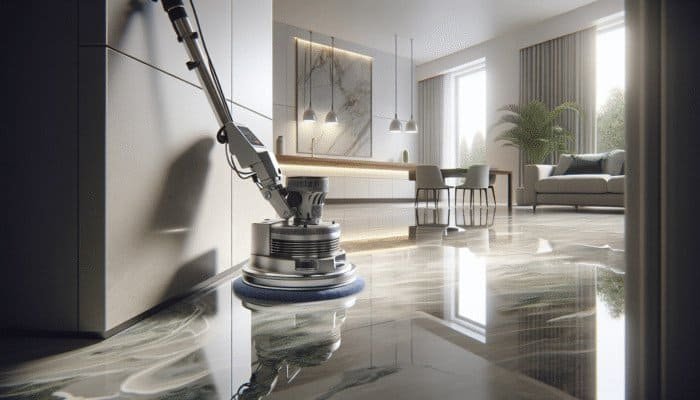
Polishing stone floors can significantly enhance their visual impact, providing them with a radiant shine and making them appear brand new. When searching for the best tools for stone floor polishing, investing in a high-quality polisher is imperative. Below, we explore some of the leading stone floor polishers available in the UK that deliver professional-grade results.
LTP Polished Concrete Sealer: Enhance Shine and Protection for Your Stone Floors
The LTP Polished Concrete Sealer is a standout product designed to enhance the lustre of stone floors while providing essential protection against wear and tear. This sealer is suitable for both interior and exterior applications, making it a versatile addition to your stone floor maintenance toolkit.
One of the primary benefits of using LTP Polished Concrete Sealer is its ability to create a protective barrier against stains and scuffs. Stone floors are inherently porous, which can lead to the absorption of spills and dirt over time. This sealer penetrates deeply, ensuring that spills remain on the surface for easy cleaning rather than seeping into the stone.
LTP Polished Concrete Sealer is user-friendly in terms of application. Homeowners can easily apply it with a mop or cloth, facilitating a practical and efficient polishing process. The end result is a beautiful floor that is well-protected against everyday wear and tear.
FILA MP90 Marble Polishing Powder: The Professional-Grade Solution for Marble Surfaces
For those specifically working with marble and other calcareous stones, FILA MP90 Marble Polishing Powder provides a professional-grade solution that effectively restores the shine of marble surfaces. Its unique formulation allows for exceptional results, making it a favourite among professional stone care experts and dedicated DIY enthusiasts alike.
One of the standout features of FILA MP90 is its ability to correct surface imperfections. Many users notice that their marble floors develop dullness over time due to foot traffic and everyday use. The polishing powder effectively buffs out these imperfections, leaving behind a glossy finish that enhances the stone’s natural beauty.
In addition to its polishing capabilities, FILA MP90 is safe and environmentally friendly, making it an excellent choice for conscientious consumers. With its ease of use—requiring merely a mix with water and application—achieving stunning, polished stone floors is accessible for anyone aiming to enhance their interiors.
AKEMI Crystal Clean: Achieving a Brilliant High-Gloss Finish on Stone Floors

For those seeking a high-gloss finish on crystal and glass surfaces, AKEMI Crystal Clean is an outstanding polisher that works wonders on stone floors. This product is renowned for its remarkable ability to enhance shine without scratching the delicate surfaces of stone.
A key advantage of using AKEMI Crystal Clean is its efficient cleaning properties. It polishes and cleans simultaneously, ensuring that your stone surfaces remain free from streaks and smudges. Homeowners frequently commend this product for its dual-action capabilities, which save time and effort in their cleaning routines while delivering impressive results.
AKEMI Crystal Clean is especially beneficial for those who enjoy entertaining or have high-traffic areas in their homes. Its high-gloss finish guarantees that floors look immaculate, creating a welcoming atmosphere. Regular use can considerably extend the life of stone floors, making AKEMI a wise investment for any homeowner.
Reliable Stone Floor Sealers in the UK for Maximum Protection
Sealers play a crucial role in preserving the integrity of stone floors. Selecting the best tools for stone floor sealing ensures long-lasting protection against stains and damage. Below, we explore some of the most reliable stone floor sealers available in the UK that provide practical and dependable security.
LTP Mattstone H20: A Water-Based Sealer for Natural Stone Floors
LTP Mattstone H20 is a water-based sealer that offers a natural, matte finish while providing superior protection for stone floors. This product is particularly advantageous for individuals who prefer a low-sheen appearance, enhancing the stone’s natural beauty without altering its inherent character.
A significant benefit of LTP Mattstone H20 is its capacity to repel both water- and oil-based stains. Stone floors, particularly those in kitchens and bathrooms, can be vulnerable to spills that may cause irreversible damage if not addressed promptly. This sealer creates a protective barrier, allowing for easier clean-up and ongoing maintenance.
Furthermore, LTP Mattstone H20 is easy to apply, requiring minimal effort for maximum results. It can be used on various stone types, making it a versatile option for homeowners with different flooring materials. Regular application of this sealer ensures that your stone floors remain protected and visually appealing.
FILE MP90 Marble Sealer: Tailored Protection for Marble and Limestone
Designed explicitly for marble and limestone floors, the FILA MP90 Marble Sealer offers exceptional durability and resistance to wear and tear. This sealer not only protects but also enhances the stone’s natural colour and patterns, ensuring its beauty is preserved over time.
One of the key features of FILA MP90 Marble Sealer is its long-lasting protection. Stone floors often encounter challenges from spills and daily use, and this product delivers a robust shield against potential damage. Users frequently commend its effectiveness in preventing stains and prolonging the lifespan of their stone surfaces.
Moreover, the application process is straightforward, making it accessible for both professional cleaners and homeowners. Incorporating FILA MP90 into your cleaning routine ensures that your marble floors remain stunning and well-maintained for years to come.
Lithofin Stain Stop: A Powerful Impregnating Sealer for Long-Lasting Protection
Lithofin Stain Stop is an impregnating sealer designed to offer long-lasting protection against oil and water-based stains on stone floors. This product is particularly beneficial for homeowners in high-traffic areas that are prone to spills and stains.
The formulation of Lithofin Stain Stop allows it to penetrate deeply into the stone, creating a protective barrier that repels liquids and prevents absorption. This feature is especially important for porous stones, which can easily become discoloured if not properly cared for.
Lithofin Stain Stop is user-friendly and can be applied with minimal hassle. Consistent use of this sealer ensures your stone floors remain clean and safeguarded from potential damage, making it a vital component of any comprehensive stone floor maintenance routine.
Aqua Mix Penetrating Sealer: Versatile Protection for Multiple Stone Types
Aqua Mix Penetrating Sealer is a solvent-based product that provides excellent protection against stains while enhancing the natural beauty of stone. Its deep-penetrating formula ensures that stone surfaces are shielded from both oil and water-based stains, making it a valuable addition to any homeowner’s cleaning arsenal.
One of the key advantages of Aqua Mix Penetrating Sealer is its versatility, as it can be used on various stone types, including granite, marble, and limestone, ensuring that a broad range of users benefit from its protective qualities. Homeowners appreciate the peace of mind that comes from knowing their stone floors are protected against daily wear and tear.
Applying Aqua Mix Penetrating Sealer is straightforward, allowing homeowners to maintain their stone floors with ease. Regular application extends the longevity of the stone, ensuring it remains beautiful and resilient against the elements.
Bellinzoni Idea Gold: The Premium Sealer for Exceptional Stone Protection
Bellinzoni Idea Gold is a premium sealer that excels at providing superior protection for various stone types. This product is particularly renowned for its ability to resist stains while preserving the stone’s original appearance, making it a top choice for discerning homeowners.
One of the remarkable features of Bellinzoni Idea Gold is its advanced formulation, which offers long-lasting protection against discolouration and wear. Users frequently report a significant improvement in the resilience of their stone floors after applying this product, highlighting its effectiveness in high-traffic areas.
Applying Bellinzoni Idea Gold is efficient and straightforward, allowing for thorough coverage without excessive effort. Its versatility makes it suitable for different types of stone surfaces, ensuring that users can easily maintain the beauty and integrity of their flooring.
Highly Effective Stone Floor Brushes Available in the UK
Maintaining clean stone floors not only enhances your home’s visual appeal but also contributes to a healthier living environment. Selecting the best tools for stone floor cleaning involves investing in high-quality brushes specifically designed for stone surfaces. Below, we explore some of the most effective stone floor brushes available in the UK.
Vileda Turbo Microfibre Mop: A Gentle Yet Effective Cleaning Tool
The Vileda Turbo Microfibre Mop stands out as an excellent choice for effectively cleaning stone floors without scratching the delicate surface. This mop features a microfibre head adept at picking up dust and dirt while being gentle on stone surfaces, ensuring thorough cleaning without causing damage.
A significant advantage of the Vileda Turbo Microfibre Mop is its rotating head, which simplifies manoeuvrability in tight spaces. Homeowners appreciate the ability to clean corners and beneath furniture easily, making it ideal for comprehensive cleaning sessions.
Additionally, the mop’s microfibre material is highly absorbent, ensuring that spills and stains are promptly addressed. Regular use of the Vileda Turbo Microfibre Mop not only keeps floors clean but also helps maintain the shine and integrity of the stone, contributing to a well-kept home.
Addis Extendable Microfibre Mop: Cleaning Flexibility for Every Area
The Addis Extendable Microfibre Mop is designed to reach even the most challenging areas while thoroughly cleaning stone floors. Its extendable feature enables users to adjust the handle’s length, making it easier to tackle high or hard-to-reach spots.
One of the standout aspects of the Addis mop is its dual-sided microfibre pad, which effectively captures dust and dirt. Homeowners find this feature particularly useful for managing everyday messes, ensuring their stone floors remain pristine with minimal effort.
Furthermore, the mop is lightweight and easy to handle, making it well-suited for quick clean-ups or more detailed cleaning sessions. The extendable handle ensures users can clean their stone floors comfortably, enhancing the overall cleaning experience.
E-Cloth Stone Floor Cleaning Pad: An Eco-Friendly Cleaning Solution
The E-Cloth Stone Floor Cleaning Pad is a specialised pad designed to effectively clean and maintain the shine of stone floors. Its unique fabric composition ensures that dirt and grime are lifted without the need for harsh chemicals, making it an eco-friendly choice for conscientious homeowners.
One of the primary advantages of the E-Cloth pad is its capability to work effectively with just water, allowing for a chemical-free cleaning solution. This feature is particularly appealing to homeowners who are conscious of their environmental impact, as it reduces reliance on harmful commercial cleaning products.
The pad is designed for easy attachment to standard mops, making it a convenient option for regular maintenance. Users often report that their stone floors feel cleaner and look shinier after using the E-Cloth pad, reinforcing its value as an essential component of any cleaning routine.
Explore Top-Rated Stone Floor Scrubbing Machines in the UK
Investing in a scrubbing machine can significantly enhance the thoroughness and efficiency of cleaning stone floors. The best tools for stone floor cleaning often include these powerful machines, which alleviate the hard work associated with scrubbing. Here, we highlight some of the top scrubbing machines available in the UK that deliver exceptional results.
Karcher BR 30/4 C Bp: Compact Scrubbing Power for Effective Cleaning
The Karcher BR 30/4 C Bp is a compact yet powerful scrubbing machine, ideal for cleaning small to medium-sized stone floor areas. Its lightweight design allows for easy manoeuvrability around tight spaces without sacrificing cleaning effectiveness.
One notable feature of the Karcher BR 30/4 C Bp is its dual cleaning method, which combines scrubbing with suction. This innovative approach means that while the machine cleans and removes excess water, it quickly leaves surfaces dry and ready for foot traffic.
The Karcher BR 30/4 C Bp is an excellent investment for those prioritising efficiency. Its ability to clean thoroughly without requiring extensive manual labour makes it a preferred choice among professional cleaners and busy households seeking effective cleaning solutions.
Numatic Henry Hard Floor Cleaner: A Versatile and Reliable Option
The Numatic Henry Hard Floor Cleaner is a versatile machine that efficiently cleans and polishes stone floors. Renowned for its reliability, the Henry model has become a staple in numerous households across the UK due to its effectiveness and ease of use.
One unique feature of the Numatic Henry is its adaptability to various surfaces, making it suitable for cleaning not only stone but also other hard floor types. Users appreciate this versatility, as it eliminates the need for multiple machines, thus simplifying the cleaning process.
Using the Numatic Henry is straightforward. It employs a combination of scrubbing and vacuuming to effectively lift and remove dirt. Regular use of this machine can help maintain the appearance and longevity of stone floors, providing excellent value for your investment.
Bissell PowerFresh Lift-Off Pet: Dual-Purpose Cleaning Solution for Pet Owners
For pet owners, the Bissell PowerFresh Lift-Off Pet is a dual-purpose machine that excels at scrubbing and steaming stone floors. This model is especially popular among those who face challenges with pet hair and stubborn stains.
A standout feature of the Bissell PowerFresh is its ability to steam clean, effectively sanitising surfaces while leaving them sparkling clean. This dual function makes it an invaluable tool for households with pets, as it tackles tough messes and eliminates odours effortlessly.
The user-friendly design of the Bissell PowerFresh allows for easy manoeuvrability around the home. Regular use of this machine ensures clean floors and contributes to a healthier home environment, making it a wise investment for pet owners seeking practical solutions.
Karcher FC 5 Hard Floor Cleaner: Efficient and User-Friendly
The Karcher FC 5 Hard Floor Cleaner is celebrated for its efficiency and ease of use. This machine can clean and dry stone floors swiftly, making it an ideal choice for larger areas requiring routine maintenance.
One key advantage of the Karcher FC 5 is its innovative two-tank system, which separates clean and dirty water. This feature guarantees that users always work with fresh water, enhancing cleaning effectiveness and preventing the spread of dirt during the process.
Designed for simplicity, the Karcher FC 5 glides smoothly over surfaces, making the cleaning process faster and less labor-intensive. Its capacity to handle larger areas makes this machine perfect for busy households or commercial spaces where efficiency is crucial.
Vax ONEPWR Blade 4 Pet & Car: Cordless Convenience for Stone Floor Cleaning
The Vax ONEPWR Blade 4 Pet & Car is a cordless, multi-surface cleaner that effectively scrubs stone floors. It is a popular choice among pet owners and those seeking convenience. Its cordless design allows for maximum flexibility, enabling users to clean effortlessly without being tethered to a power outlet.
One standout feature of the Vax ONEPWR Blade 4 is its powerful suction, which effectively lifts dirt and debris, leaving floors clean and free from residue. This machine is particularly invaluable for pet owners, as it efficiently manages pet hair and messes, ensuring a hygienic environment.
Lightweight and easy to manoeuvre, the Vax ONEPWR Blade 4 Pet & Car provides a user-friendly experience that simplifies the cleaning routine. With its ability to tackle multiple surfaces, it is an excellent investment for those desiring efficiency and effectiveness in their cleaning efforts.
Essential Stone Floor Maintenance Kits Available in the UK
A well-rounded approach is essential for maintaining the beauty and longevity of stone floors, and investing in a complete maintenance kit can be an efficient solution. The best tools for stone floor care often come in maintenance kits that include a variety of essential products designed to keep stone surfaces in pristine condition. Here are some highly recommended stone floor maintenance kits available in the UK.
LTP Stonewash Maintenance Kit: The All-In-One Solution for Stone Care
The LTP Stonewash Maintenance Kit is a comprehensive solution that includes a cleaner, sealer, and polish, making it ideal for regular stone floor maintenance. Users appreciate the convenience of having all necessary products in one package, simplifying the cleaning process and ensuring optimal results.
One of the key advantages of the LTP Stonewash Maintenance Kit is its proven effectiveness. The included cleaner is formulated to eliminate dirt and stains without damaging the stone, while the sealer provides essential protection against future stains. The polish enhances the shine, ensuring your floors look their best and remain inviting.
Additionally, this kit is user-friendly, suitable for both professional and DIY users. Regular use of the LTP Stonewash Maintenance Kit guarantees that your stone floors remain vibrant and well-maintained, ultimately prolonging their lifespan and beauty.
FILE Cleaner Kit for Natural Stone: Optimised for Superior Results
The FILE Cleaner Kit for Natural Stone is specifically designed to clean and maintain various types of natural stone. This kit includes essential products that work in harmony to ensure optimal cleaning results and overall stone care.
One of the standout features of the FILE Cleaner Kit is its professional-grade formulations. Users frequently find that their stone floors appear revitalised after using the products in this kit. The cleaner effectively removes tough stains, while the sealer protects against future damage, ensuring that your natural stone remains in excellent condition.
With its focus on natural stones, the FILE Cleaner Kit is an excellent choice for homeowners aiming to maintain the beauty and integrity of their flooring. Regular use not only cleans but also preserves the stone’s natural characteristics, ensuring it lasts for years to come.
Commonly Asked Questions About Stone Floor Maintenance
What tools are essential for effective stone floor cleaning?
Essential tools for effective stone floor cleaning include specialised cleaners like Lithofin KF Tile Restorer, polishers such as LTP Polished Concrete Sealer, and efficient scrubbing machines like Karcher FC 5.
How frequently should I clean my stone floors to maintain their condition?
It is recommended to clean your stone floors at least once a week to prevent deterioration and maintain their appearance. However, high-traffic areas may require more frequent cleaning to ensure they remain in optimal condition.
Can I use regular household cleaners on my stone floors without causing damage?
Regular household cleaners can potentially harm stone floors due to their acidic nature or harsh chemicals. To avoid any adverse effects, it is always best to use products specifically designed for stone cleaning.
What is the most effective method for polishing stone floors?
Using a dedicated stone floor polisher or polishing powder, such as FILA MP90, can significantly enhance the shine of your floors. Always follow the manufacturer’s instructions to achieve the best results.
How can I effectively remove stains from my stone floors?
A stain-specific cleaner, like Lithofin Stain Stop, can effectively eliminate stains. For particularly stubborn stains, consider professional cleaning services or employing a poultice for the best outcomes.
Is sealing necessary for maintaining stone floors?
Yes, sealing is crucial for stone floors. It protects against stains and damage, significantly extending the stone’s life and beauty.
Can I safely use a steam cleaner on my stone floors?
While certain stone floors can handle steam cleaning, it is essential to confirm the type of stone first, as some may be sensitive to heat and moisture, potentially leading to damage.
What constitutes an effective maintenance routine for stone floors?
An effective maintenance routine incorporates regular cleaning with appropriate products, periodic sealing, and avoiding harsh chemicals that could harm the stone over time.
How do I choose the right cleaning products for my stone floors?
Consider the specific type of stone you have and select products formulated specifically for that material. Reading reviews and consulting professionals can also guide your choices for optimal results.
Can I manage my stone floor maintenance independently?
Many homeowners successfully maintain their stone floors using the right tools and products. However, seeking professional assistance may be advisable to ensure comprehensive care for significant damage or restoration needs.
The article Essential Stone Floor Cleaning Solutions in the UK for Homeowners was first found on https://london-stone.co.uk
The article Stone Floor Cleaning Solutions for UK Homeowners appeared first on https://fabritec.org
The Article Stone Floor Cleaning Solutions for Homeowners in the UK Was Found On https://limitsofstrategy.com

